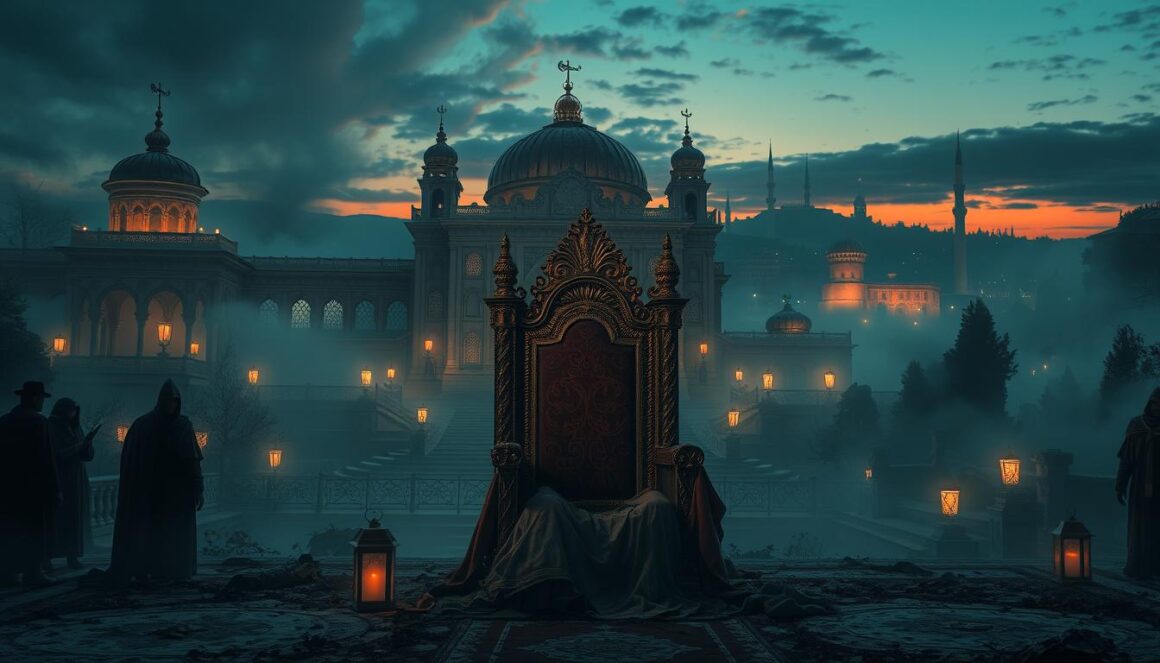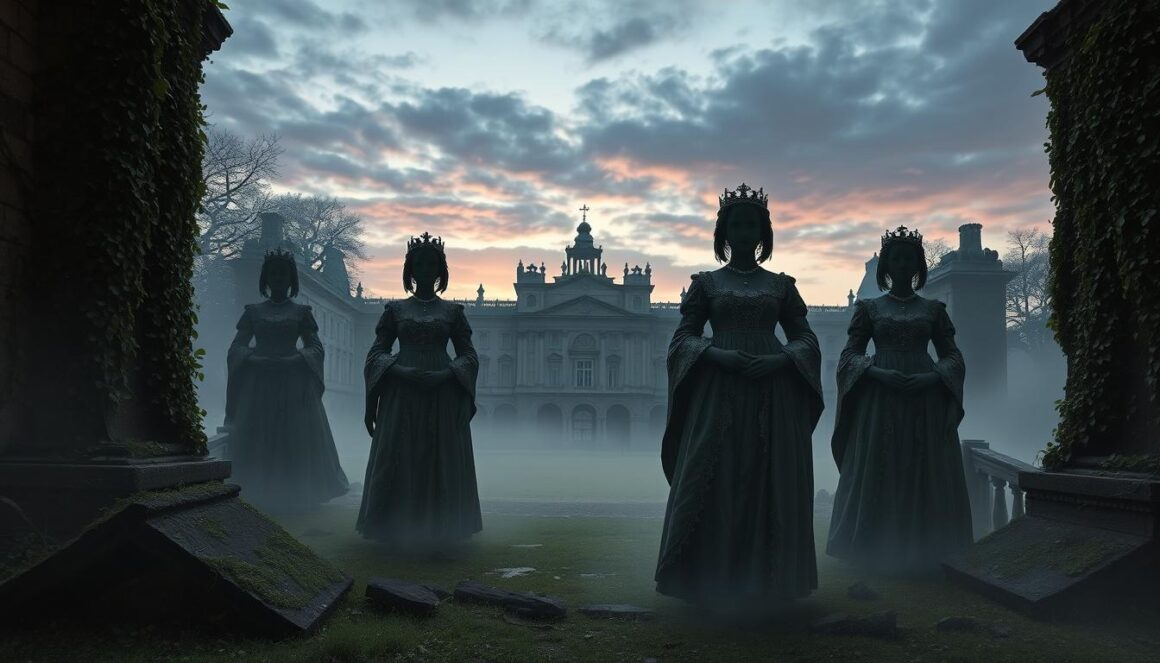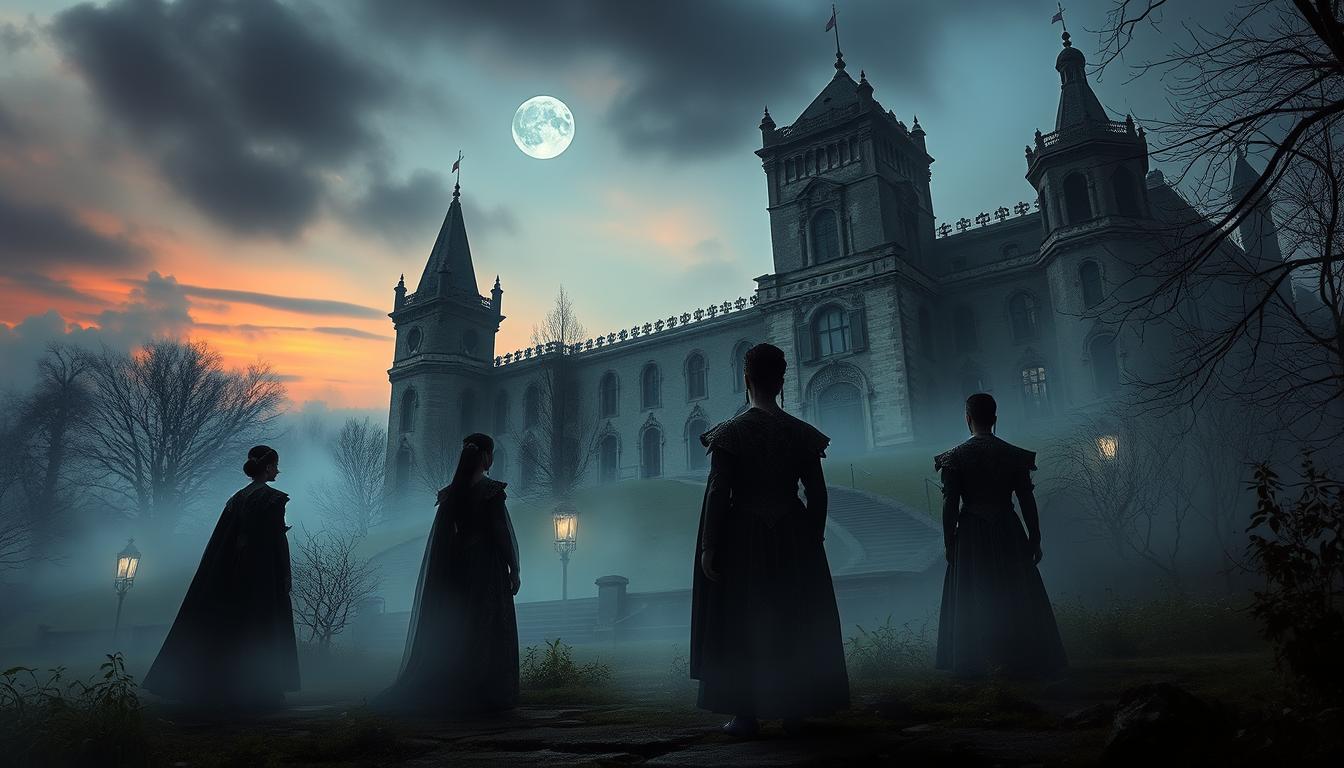In the misty shadows of history, some monarchs have become legendary enigmas. Their stories blur the lines between fact and myth. These tales of missing monarchs have captivated generations, weaving narratives that transcend time and reality.
For centuries, stories of vanished rulers have sparked imagination and curiosity. Nearly 9-10 legendary monarchs across various cultures are believed to have mysteriously disappeared. Or they are rumored to return, creating an enduring mystique around their legacies.
From King Arthur’s 1,500-year-old legend to Frederick Barbarossa’s mythical mountain slumber, these monarchs represent more than historical figures. They embody collective hopes, dreams, and unresolved mysteries. These continue to intrigue scholars and storytellers alike.
Key Takeaways
- Approximately 9-10 legendary monarchs are recognized in global folklore
- Disappeared royalty often represent cultural archetypes of leadership
- Myths of missing monarchs span multiple cultural traditions
- Historical narratives frequently blend fact with legendary elements
- Royal disappearances continue to fascinate modern audiences
Emperor Romulus Augustus: The Last Roman

Romulus Augustus, a teenager, became the last emperor of the Western Roman Empire. He was just 10 years old when he took the throne in 475 AD. His short reign of 10 months was marked by turmoil in Roman history.
The stories of vanished kings and queens are often full of mystery. Romulus Augustus was a perfect example. His time as emperor was during the fall of Roman power, with constant invasions and political troubles. In the two decades before him, there were eight different emperors, leading to endless instability.
On September 4, 476 AD, in Ravenna, Italy, Romulus Augustus was overthrown by Odoacer, a Germanic warrior. Odoacer became the first King of Italy. Unlike many lost sovereigns, Romulus was spared. He was allowed to retire, and his life after that became a mystery.
Historians debate where Romulus Augustus went after his deposition. Some think he lived quietly until 507 or 511 AD. His life after being removed from power became a legend, marking the end of an empire that once ruled the ancient world.
Romulus Augustus is more than just a footnote in history. He shows the big change in power in late antiquity. He is a symbol of an empire’s fall and the start of a new era in Europe.
King Harold II: England’s Lost Monarch

The stories of medieval monarchs who vanished have always fascinated people. King Harold II is one of the most mysterious. His disappearance is linked to the Battle of Hastings in 1066, a turning point in English history.
There are many theories about what happened to Harold. Some say he died in battle, while others believe he might have survived. Local stories even suggest he could have lived in secret for years.
No one knows for sure where Harold is buried. Some think his mistress, Edith Swan-neck, might have identified him among the dead at Hastings. But with so many bodies, finding him was impossible.
Waltham Abbey is thought to be Harold’s burial place. But much of the abbey was destroyed, making it hard to find proof. The mystery of his last days is a big puzzle for historians and fans of history.
Harold II’s disappearance marked the end of Saxon rule and the start of Norman rule in England. His fate is a reminder of the chaos and change that medieval England faced.
Sultan Osman II: The Vanished Ottoman

The story of Sultan Osman II is one of the most fascinating in Ottoman history. In May 1622, this young leader found himself caught in a deadly political battle. This battle would end his life during a chaotic time for the Ottoman Empire.
At just 19, Osman II was part of a group of monarchs who vanished under strange circumstances. The Janissary rebellion against him was a turning point in the empire’s history. Tensions had been growing for months, fueled by the sultan’s efforts to reform the military.
Accounts of Osman II’s disappearance shocked the Ottoman court. He was deposed and imprisoned, facing harsh treatment from the Janissaries. His short time as sultan showed how quickly a young ruler could lose power.
The truth about his final moments is unclear. Some say he was strangled with a silk cord, a common method of execution in the Ottoman Empire. Others suggest he might have tried to escape or survived in secret, sparking ongoing debates among historians and fans of folklore.
Osman II’s disappearance was more than a personal tragedy. It highlighted the empire’s internal conflicts. It showed the struggle for power between the sultan and his military.
King Louis XVII: France’s Ghostly Ruler

The French Revolution was a time of great turmoil. King Louis XVII, a young prince, became a mystery that has haunted many. He was born on March 27, 1785, in Versailles. After his brother’s death, he became the dauphin, thrown into a world of chaos and tragedy.
When his parents, King Louis XVI and Marie-Antoinette, were executed, Louis XVII was imprisoned in the Temple. This was a dark time in European history. He was separated from his family and watched closely, becoming a symbol of royal weakness.
The boy’s reign lasted from January 21, 1793, until his death on June 8, 1795, at just ten years old. Many believed he might have survived. After his death, over 30 people claimed to be the lost royal heir, adding to the mystery.
In 1999, DNA testing solved the mystery. It confirmed a preserved heart was Louis XVII’s, matching Marie-Antoinette’s DNA. This discovery ended the speculation, proving the young king’s tragic end in prison.
King Mwanga II: Africa’s Forgotten Monarch
King Mwanga II of Buganda is a key figure in African colonial history. His story is one of resistance against European powers and the change of traditional monarchies. It shows the deep impact of colonialism on African rulers.
Mwanga II was born in a time when Europe was dividing Africa. His reign was marked by battles with British colonizers and Christian missionaries. They wanted to take away his power.
His fight against European influence led to his exile. Mwanga II faced a hard choice between keeping his kingdom free and the growing colonial power. His disappearance symbolizes the struggles of African monarchs during this time.
Today, Mwanga II’s story fascinates those who study African history. It highlights the personal and political battles of monarchs under colonial rule. His legacy reminds us of the challenges faced by African rulers during this era.
Conclusion – 5 Monarchs Who Vanished Without a Trace
The tales of monarchs who vanished are among history’s most intriguing mysteries. These monarchs whose fates are unknown keep sparking curiosity and research. Each story is a mix of politics, social change, and drama, going beyond simple history.
The disappearances of royals show how fragile power can be. They lived in complex political worlds. From Emperor Romulus Augustus to King Mwanga II, their stories show how quickly a royal’s fate can change. They highlight the unpredictable nature of staying powerful and the thin line between fame and being forgotten.
Archaeology and new historical methods might solve some of these mysteries. Modern forensic science and deep archival searches are uncovering new stories. Even if we can’t solve everything, each find brings us closer to understanding these royal enigmas.
These monarchs teach us that history is more than just dates and facts. It’s a complex web of human experiences, full of mystery, challenge, and strength. Their stories continue to captivate researchers and history lovers, showing that some mysteries are forever.



